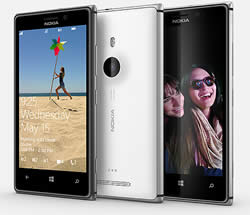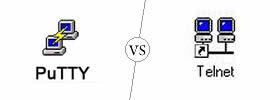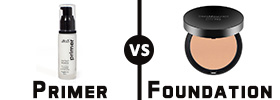Difference between Nokia Lumia 925 and Nokia Lumia 920
Key Difference: Nokia has recently announced its new flagship phone the Nokia Lumia 925. The phone comes with a 4.5-inch AMOLED capacitive touch screen which takes up a good amount of space on the front, with the speaker and sensors on the top. The 4.5-inch capacitive screen has the same PureMotion HD+, ClearBlack that is found in Lumia 920. One of the first smartphones under the brand is the Nokia Lumia 920. The Nokia Lumia 920 was one of the first phones to be developed running on Windows Phone 8. It was launched in November 2012 as its flagship phone.
 Nokia is a Finland-based multinational communications and information technology corporation. Nokia’s phones have been famously known as being simple and durable. In 2012, it was the world’s second largest mobile phone maker by unit sales, following Samsung. However, the sales of Nokia have been decreasing as more and more of the market shifts towards smartphones such as iPhones and Androids. In an attempt to offset their decreasing sales, Nokia tied up with Microsoft to release its own line of smartphones, the Nokia Lumia running on Windows Phone Operating Software.
Nokia is a Finland-based multinational communications and information technology corporation. Nokia’s phones have been famously known as being simple and durable. In 2012, it was the world’s second largest mobile phone maker by unit sales, following Samsung. However, the sales of Nokia have been decreasing as more and more of the market shifts towards smartphones such as iPhones and Androids. In an attempt to offset their decreasing sales, Nokia tied up with Microsoft to release its own line of smartphones, the Nokia Lumia running on Windows Phone Operating Software.
Nokia has recently announced its new flagship phone the Nokia Lumia 925. This phone is in lines with the other new Nokia Lumia 928, but differs from its cousin in many ways. The Nokia Lumia 925 was also known as “Catwalk” phone for a long time before it was officially announced. The company has maintained a similar design to its Lumia phones but has added a metal band. This is the first phone that will feature a mix of plastic and metal. However, the back is still made of polycarbonate plastic. The phone is made slim and light weight making it comfortable to hold. The phone’s frame is made of aluminum with only the back made of plastic. However, the back is non-removable so the battery is not easily accessible.
The device is available in black, white or grey, so don’t look for the bright colors that are expected of other Nokia phones. The phones comes with a 4.5-inch AMOLED capacitive touch screen which takes up a good amount of space on the front, with the speaker and sensors on the top and the three capacitive buttons (Home, Back and Menu) on the bottom. Similar to the other high-end Lumias, the top of the device holds audio jack, the microUSB port and the SIM slot. The left and the bottom side of the device is bare, while the right side has the volume rocker, the power button and the dedicated camera button making it a little too crowded.
The 4.5-inch capacitive screen has the same PureMotion HD+, ClearBlack that is found in Lumia 920. The ClearBlack technology plus the HD OLED screen offers sharp, clear images and also spectacular viewing in sunlight. The phones provides a good contrast and vibrant colors but the difference is not really that apparent when using day-to-day.
Under the hood, the phone is powered by Dual-core 1.5 GHz Krait Qualcomm MSM8960 Snapdragon, the same processor used in Lumia 920 and 928. The processor is fast and responsive, but lags when it comes to camera. The phone comes with Adreno 225 and 1 GB RAM, compared to the 2G found in its competitors. The phone comes with only 16 GB internal memory and does not offer users to extend it using an external card. The phone integrates the Windows Phone 8 OS, which works seamlessly. However, again similar to all other Windows Phones, the app stores lack many apps and still has yet to reach its potential.
The phone comes with an 8.7MP rear camera and a 1.3MP front camera. The camera comes with upgraded technology that uses a 1/3'' sensor size to take more high-res photos. The camera also comes with Nokia’s Smart Camera technology that allows taking 10 photos at once, which can then be altered to create the perfect photo. This is similar to the Zoe technology found on HTC One that takes mini videos along with photos. The company has also added an additional lens on the five-lens that allows taking much better photos. Nokia also boasts about its low-light imaging technology that allows users to take excellent photos in low-lighting conditions. The imaging technology is quite superior and does take excellent images with less blur. However, the camera shutter is quite slow which requires the user to hold the phone with a steady hand to eliminate motion blur.
The company also has removed the built-in wireless feature to cut down on the weight, but has added it as an option by purchasing the wireless cover. The phone comes with a non-removable Li-Ion 2000 mAh battery that allows the phone to go longer periods of time without requiring charging. The phone also comes with a few nifty features that make it stand out. The new phone is slick, thin and has decent features. It could just be phone that turns the tide in favor of Nokia Windows Phone.
 The Nokia Lumia 920 was one of the first phones to be developed running on Windows Phone 8. It was launched in November 2012 as its flagship phone. At the same time, Nokia launched Nokia Lumia 820, as a slightly cheaper alternative to the Nokia Lumia 920.
The Nokia Lumia 920 was one of the first phones to be developed running on Windows Phone 8. It was launched in November 2012 as its flagship phone. At the same time, Nokia launched Nokia Lumia 820, as a slightly cheaper alternative to the Nokia Lumia 920.
Nokia Lumia 920 has a 4.5 inch display with a resolution of 768 x 1280 pixels. It is powered by a Qualcomm MSM8960 Snapdragon Dual-core 1.5 GHz Krait and a 1 GB RAM. The phone has 8 GB internal memory and an external memory expandable up to 64 GB. It features an 8 MP primary camera with a resolution of 3264 x 2448 pixels. It also has a 1.3 MP front-facing secondary camera.
The phone is available in a variety of bright colors, such as black, gray, red, yellow, and white. The newest and most distinguishing feature of the Lumia 920 is that the phone is capable of wireless charging. However, the wireless charging mat is not included with the phone and has to be purchased separately.
The device has been criticized as being heavy and bulky. Another issue with the phone, in fact all the Windows phones, is that it comes with the Internet Explorer browser built-in, which can be quite lagging at times, and the phones do not support any other browsers. Furthermore, the collection of apps available on Windows is quite limited, especially as compared to the apps available for Android and Apple.
The information for the detailed table about the two phones has been taken from the Nokia website, digitaltrends.com and GSMArena.com.
|
|
Nokia Lumia 925 |
Nokia Lumia 920 |
|
Launch Date |
June 2013 |
November 2012 |
|
Company |
Nokia |
Nokia |
|
Size |
129 x 70.6 x 8.5 mm |
130.3 x 70.8 x 10.7 mm, 99 cc (5.13 x 2.79 x 0.42 in) |
|
Display |
4.5 inches AMOLED capacitive touchscreen |
4.5 inches IPS LCD capacitive touchscreen, 16M colors |
|
Screen |
768 x 1280 pixels (~334 ppi pixel density), 16M colors |
768 x 1280 pixels (~332 ppi pixel density) |
|
Protection |
Corning Gorilla Glass 2 |
Corning Gorilla Glass 2 - PureMotion HD+ ClearBlack display |
|
Weight |
139 grams |
185 g (6.53 oz) |
|
2G Network |
GSM 850 / 900 / 1800 / 1900 |
GSM 850 / 900 / 1800 / 1900 - RM-821, RM-820 |
|
3G Network |
HSDPA 850 / 900 / 1900 / 2100 - RM-892, RM-893 HSDPA 850 / 900 / 1700 / 1900 / 2100 - RM-910 |
HSDPA 850 / 900 / 1900 / 2100 - RM-821, RM-820 |
|
4G Network |
LTE 800 / 900 / 1800 / 2100 / 2600 - RM-892 LTE 700 / 1700 / 2100 - RM-893 |
LTE 800 / 900 / 1800 / 2100 / 2600 - RM-821 |
|
GUI |
Windows Phone 8 |
Windows Phone 8 |
|
CPU speed |
Dual-core 1.5 GHz Krait |
Dual-core 1.5 GHz Krait |
|
GPU |
Adreno 225 |
Adreno 225 |
|
OS |
Windows Phone 8 |
Microsoft Windows Phone 8 |
|
Chipset |
Qualcomm MSM8960 Snapdragon |
Qualcomm MSM8960 Snapdragon |
|
RAM |
1 GB |
1 GB RAM |
|
SIM Size |
microSIM |
Micro-SIM |
|
Internal Memory |
16 GB |
32 GB |
|
Expandable Memory |
N/A |
No |
|
Sensors |
Ambient light sensor, Accelerometer, Gyroscope, Proximity sensor, Magnetometer, Orientation sensor |
Accelerometer, gyro, proximity, compass |
|
Connectivity |
SIM, microUSB, 3.5mm audio, USB, Bluetooth, Wi-Fi, NFC, Wi-Fi Channel bonding |
Micro-USB charging connector, 3.5 mm audio connector, Micro-USB-B connector, USB 2.0, Bluetooth 3.0, Wi-Fi, NFC, Wi-Fi Channel bonding |
|
Data |
GPRS, EDGE, WLAN, Bluetooth, NFC and USB. |
GPRS, EDGE, WLAN, Bluetooth, USB, NFC |
|
Speed |
HSDPA, 42.2 Mbps; HSUPA, 5.76 Mbps; LTE, Cat3, 50 Mbps UL, 100 Mbps DL |
HSDPA, 42.2 Mbps; HSUPA, 5.76 Mbps; LTE, Cat3, 50 Mbps UL, 100 Mbps DL |
|
WLAN |
WLAN IEEE 802.11 a/b/g/n |
Wi-Fi 802.11 a/b/g/n, dual-band, DLNA, Wi-Fi hotspot |
|
Bluetooth |
Bluetooth v3.0 with A2DP; Object Push profile (OPP) 1.1, Hands-free profile (HFP) 1.5, Advanced Audio Distribution Profile (A2DP) 1.2, Audio/Video Remote Control Profile (AVRCP) 1.4, Phone Book Access Profile (PBAP) 1.1 |
Yes, v3.1 with A2DP, EDR |
|
USB |
microUSB v2.0 |
microUSB v2.0 |
|
Primary Camera |
8.7 MP, 3264 x 2448 pixels |
8 MP, 3264 x 2448 pixels |
|
Secondary Camera |
1.3 MP, 720p@30fps |
Yes, 1.3 MP, 720p@30fps |
|
Video |
1080p@30fps, video stabilization |
Yes, 1080p@30fps, video stabilization |
|
Camera Features |
|
|
|
Sound Enhancement |
Dolby Headphone sound enhancement Active noise cancellation with dedicated mic |
Mono with high dynamics, Active noise cancellation with dedicated mic |
|
Audio supported formats |
ASF, MP4, AAC, AMR, MP3, M4A, WMA, 3GP, 3G2 |
Codecs: MP3, AMR-WB, AMR-NB, WMA 10 Pro, WMA 9, AAC LC, AAC+/HEAAC, eAAC+/HEAACv2 Audio playback file formats: ASF, MP4, AAC, AMR, MP3, M4A, WMA, 3GP, 3G2 |
|
Video supported formats |
MP4, WMV, AVI, 3GP, 3G2, M4V, MOV |
Video playback codecs: VC-1, H.264/AVC, H.263, MPEG-4 Video playback file formats: MP4, WMV, 3GP, M4V Video recording formats: MP4/H.264 |
|
Battery Capacity |
Non-removable Li-Ion 2000 mAh battery (BL-4YW) |
Non-removable Li-Ion 2000 mAh battery (BP-4GW) |
|
Talktime |
2G: 18 hours 3G: 12 hours |
2G: 18.6 hours 3G: 10.8 hours |
|
Standby Time |
3G: 440 hours |
3G: 460 hours |
|
Available Colors |
Black, White, Gray |
Black, Gray, Red, Yellow, White |
|
Messaging |
SMS (threaded view), MMS, Email, Push Email, IM |
SMS (threaded view), MMS, Email, Push Email, IM |
|
Browser |
HTML5 |
HTML5 |
|
Radio |
FM radio |
No |
|
GPS |
GPS with A-GPS support and GLONASS |
Yes, with A-GPS support and GLONASS |
|
Java |
N/A |
No |
|
Additional Features |
|
|
Images Courtesy: nokia.com









Add new comment